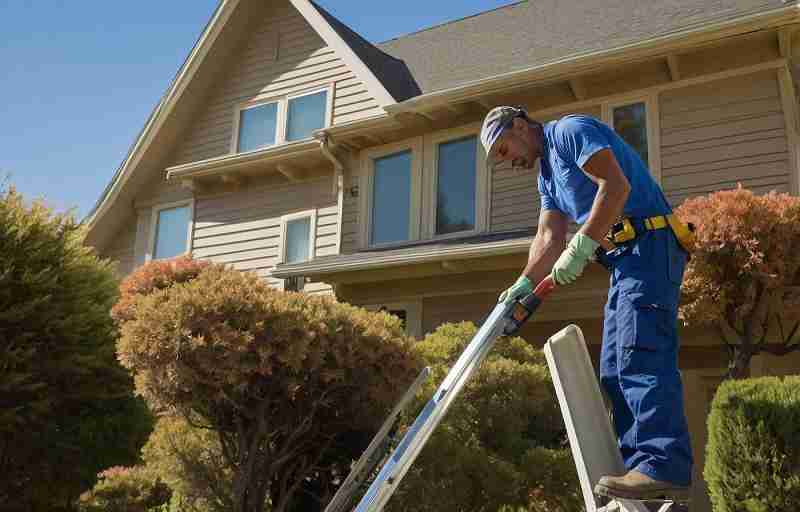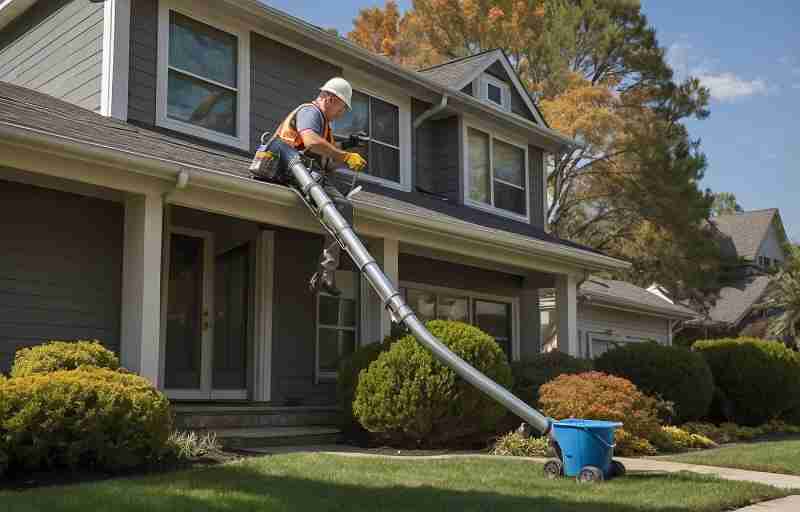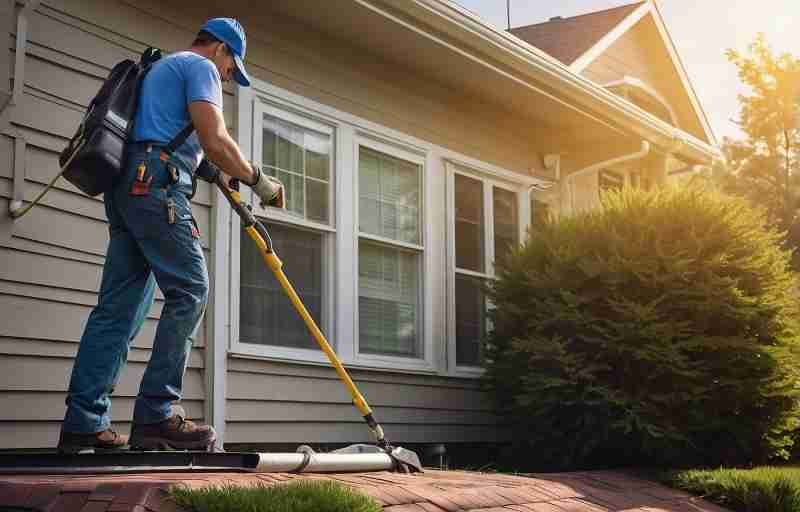Water damage from gutters is one of the most common and costly issues homeowners face, yet it’s often preventable with the right maintenance and care. Understanding how to prevent water damage from gutters can save you thousands in repairs and protect the structural integrity of your home. Clogged or damaged gutters can lead to overflowing water, which may seep into your foundation, walls, and basement, causing serious water damage. At COMMITTED TO QUALITY SERVICE, we specialize in water damage restoration, using advanced equipment specifically designed to dry and restore structures affected by severe water intrusion. Whether you’re dealing with minor leaks or major flooding, our fast, friendly, and professional team is here to help. Call us now at 855-933-7935 to learn more about how our expert services can protect your home from water and fire damage. Don’t wait until it’s too late—take proactive steps today to safeguard your property.
Importance of Regular Gutter Maintenance

Regular gutter maintenance plays a crucial role in preventing costly water damage to your home. Gutters are designed to channel rainwater away from your roof and foundation, but when they become clogged with leaves, debris, or dirt, they can overflow and lead to serious structural issues. According to the Insurance Information Institute, water damage is one of the most common and costly types of homeowner insurance claims, with an average claim exceeding $10,000.
“Neglecting gutter maintenance can lead to foundation cracks, basement flooding, and even mold growth inside your home.”
Routine inspections and cleanings help ensure that your gutters function properly year-round. Experts recommend cleaning your gutters at least twice a year—typically in the spring and fall—to avoid blockages and ensure smooth water flow.
- Clogged gutters can cause water to back up onto the roof, leading to rot and leaks.
- Overflowing water can erode landscaping and damage your home’s foundation.
- Standing water in gutters becomes a breeding ground for pests like mosquitoes.
For homeowners looking to protect their property, investing in professional gutter maintenance is a wise decision. Learn more about our comprehensive services that help prevent water damage before it starts. You can also explore our detailed guide on how to identify hidden water damage early.
For additional insights and expert tips, visit our blog or check out our FAQ section. Regular maintenance today can save you thousands in repairs tomorrow.
How to Clean Your Gutters Effectively

Regular gutter cleaning is essential to prevent costly water damage to your home. Clogged gutters can cause rainwater to overflow, leading to foundation issues, roof leaks, and even interior water damage. To clean your gutters effectively, start by using a sturdy ladder and wearing gloves for protection. Remove leaves, twigs, and debris by hand or with a gutter scoop. Once cleared, flush the gutters and downspouts with a garden hose to ensure water flows freely.
Inspect your gutters for signs of damage such as rust, sagging, or loose fasteners. Repair or replace any damaged sections promptly to maintain proper drainage. It’s also wise to check for signs of hidden water issues during this process. For more tips on spotting early signs of damage, visit our guide on how to identify hidden water damage early.
Cleaning should be done at least twice a year—typically in the spring and fall—but more frequently if your home is surrounded by trees. Consider installing gutter guards to reduce the buildup of debris and minimize maintenance.
If you’re unsure about tackling this task yourself, professional help is available. Learn more about our expert services designed to protect your home from water damage. You can also explore our gallery to see how we’ve helped other homeowners maintain their properties.
Signs Your Gutters Need Repair or Replacement
Recognizing the early warning signs that your gutters need repair or replacement is essential in preventing costly water damage to your home. One of the most obvious indicators is visible sagging or separation from the roofline, which can prevent proper water flow. Cracks, rust spots, or holes in the gutter system may seem minor but can lead to significant leaks over time. If you notice water spilling over the sides during rain, it could be due to clogs or improper slope, both of which compromise the system’s efficiency.
Peeling paint or water stains on your home’s siding are also red flags, often signaling that water is not being directed away from the structure. Additionally, pooling water near the foundation or erosion in your landscaping can indicate that your gutters are not functioning correctly. These issues can lead to serious structural problems if not addressed promptly.
Regular inspections and maintenance can help you avoid these problems. If you’re unsure about the condition of your gutters, consider reaching out to professionals who specialize in restoration services. They can assess the damage and recommend the best course of action. For more information on how to protect your property, visit our blog or explore our FAQ section for expert advice. Taking proactive steps now can save you from expensive repairs in the future.
Installing Gutter Guards for Added Protection

Gutter guards are an effective solution for preventing water damage by keeping your gutters free from debris such as leaves, twigs, and dirt. When gutters become clogged, water can overflow and seep into your home’s foundation, walls, or basement, leading to costly repairs. Installing gutter guards helps maintain proper water flow, reducing the risk of overflow and structural damage.
These protective systems are especially beneficial during heavy rainfall or in areas with dense foliage. By minimizing blockages, gutter guards also reduce the need for frequent cleaning and maintenance, saving homeowners time and effort. In addition, they help deter pests like rodents and insects that often nest in clogged gutters.
Choosing the right type of gutter guard—whether mesh, screen, or reverse curve—depends on your home’s specific needs and local climate. Professional installation ensures optimal performance and long-term protection. If you’re unsure which option is best, consider reaching out to experts who specialize in home restoration services for guidance.
Preventative measures like these are crucial in avoiding extensive water damage that can compromise your home’s integrity. For more tips on safeguarding your property and understanding the early signs of hidden issues, explore our helpful resources or visit our blog for expert advice.
Ensuring Proper Downspout Drainage
One of the most critical aspects of preventing water damage from gutters is ensuring that downspouts are functioning correctly. Downspouts are responsible for directing rainwater away from your home’s foundation. If they are clogged, broken, or improperly positioned, water can pool around the base of your property, leading to costly structural damage, basement flooding, and even mold growth.
To maintain proper drainage, regularly inspect your downspouts for blockages caused by leaves, debris, or ice. Make sure they extend at least 4 to 6 feet away from your home to prevent water from seeping into the foundation. Installing downspout extenders or splash blocks can further help in guiding water away efficiently.
Additionally, check for signs of erosion or water stains near the base of your home, which may indicate poor drainage. If you notice any issues, it’s essential to address them promptly to avoid long-term damage. For more tips on protecting your property, visit our blog or explore our comprehensive services.
Proper downspout drainage not only safeguards your home’s structural integrity but also helps prevent the growth of mold and mildew. If you suspect hidden water damage, learn how to detect it early by reading our guide on how to identify hidden water damage. Taking these proactive steps can save you time, money, and stress in the long run.
Landscaping Tips to Prevent Water Pooling
Proper landscaping plays a crucial role in preventing water damage caused by overflowing or poorly maintained gutters. When your yard is not graded correctly, rainwater can pool near your home’s foundation, increasing the risk of leaks, basement flooding, and structural damage. To avoid these issues, ensure your yard slopes away from your house. A gentle slope helps direct water flow away from the foundation, reducing the chances of water seeping into your home.
Installing features like French drains, dry creek beds, or swales can also help manage excess water. These landscaping solutions guide water away from your home and into designated drainage areas. Additionally, using mulch and native plants in your garden can improve soil absorption and reduce runoff. Be cautious, however, not to pile mulch too close to the foundation, as it can trap moisture.
Regular maintenance of your landscaping is just as important as gutter upkeep. Remove debris, check for erosion, and inspect your drainage systems frequently. If you suspect water damage, it’s essential to act quickly. Learn more about the signs by visiting our guide on how to identify hidden water damage early.
For more information on our professional restoration and prevention solutions, explore our services or get to know us better on our about page. Taking proactive steps in landscaping can significantly reduce the risk of water damage and protect your home for years to come.
When to Call a Professional for Gutter Issues
While regular maintenance can prevent many gutter-related problems, there are times when calling a professional is the safest and most effective option. If you notice persistent leaks, sagging gutters, or water pooling near your foundation despite your efforts, it’s a clear sign that expert help is needed. These issues can indicate deeper structural problems or hidden water damage that may not be visible to the untrained eye.
Professionals have the tools and experience to assess the full extent of the damage and provide long-term solutions. For example, if your gutters are clogged due to mold or debris buildup, a specialist can not only clean them but also check for signs of mold growth, which may require mold remediation. Additionally, if water damage has already occurred, a professional can help mitigate the impact and prevent further deterioration.
Hiring a certified expert ensures that repairs are done safely and in compliance with local building codes. It also saves you time and reduces the risk of injury from climbing ladders or handling tools improperly. To learn more about the services available, visit our services page. If you’re unsure whether your issue requires professional attention, our team is here to help—reach out through our contact page for a consultation.
In conclusion, preventing water damage from gutters is all about regular maintenance, timely repairs, and smart upgrades. By keeping your gutters clean, ensuring proper installation, and directing water safely away from your home, you can protect your property from costly damage and maintain its structural integrity. Don’t wait for a problem to arise—take proactive steps today to ensure your gutters are functioning efficiently. A little effort now can save you significant time and money in the future.
